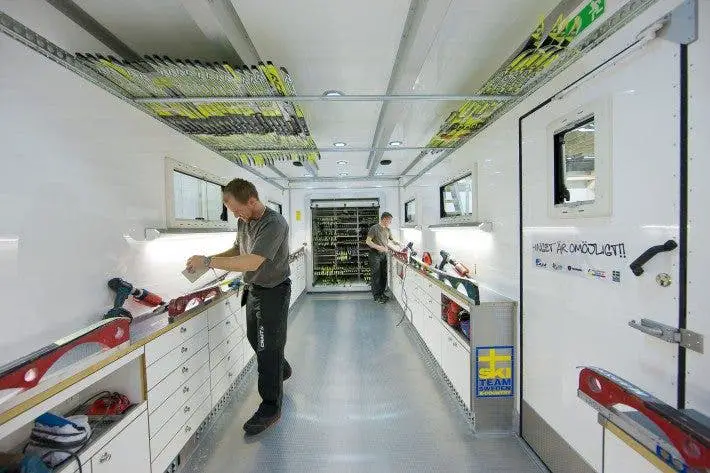Research in the field of cross-country skiing is an intense struggle to seek to gain seconds during competitions. The athlete of this sport has to overcome three great external forces: the force of the wind , the gravitational force in the ascents and the friction force between the ski and the snow. The performance of a skier in competition can be markedly marked by the choice and use of skis and gliding waxes.
By using more aerodynamic and tight suits you are achieving a great performance advantage. Gliding speed contributes to a substantial part of the success as it is already demonstrating in these world championships taking place in Falun, Sweden. The importance of the subject is illustrated by research that shows that among a group of athletes of the same level, the material can tip the balance in the results that they can achieve.
Every season, world-class athletes spend a great deal of time with their “Skiman” (technicians who prepare the skis) to find the best possible skis for their individual technique and the different slopes, as well as for the different characteristics of the slope and snow. The importance of slippage in cross-country skiing competitions is significant as the margin of error between success and not achieving a place on the podium is very small. In most international cross-country ski races, the time difference is less than 1% separating first from fourth place. The friction of the snow can be a determining factor in performance and more important than the aerobic capacity of the athlete in question, it is very difficult to scientifically demonstrate how much it can or cannot give us an improvement in performance but we can affirm that all the Athletes who experiment with faster skis say the same thing, a race on suitable skis is very different.
Raising professionalism is a visible challenge, at the moment in the World Cup meeting almost all the dominant countries have invested a truck for their technicians to work to prepare their skis in their own laboratories. National teams have started spending more money on their service personnel, in order to optimize working conditions. Constant improvement and evolution seems essential to stay on top of the hit charts.
Cross-country skiing a way of life
Competition cross-country skiing has a long tradition in Scandinavia from the second half of the 19th century, the sport became more organized in Norway. The first 50km race in Oslo, called the Husebyrennet, started from Majorstua and took place on February 7, 1888. Since then, the popularity of various cross-country ski events has steadily increased over the past century. The largest sporting event in Sweden, “The Vasaloppet, attracts 60,000 participants during the competition week. Equally telling is that all 17,000 registrants for the Norwegian Birkebeinerrennet event were covered just one hour after registration opened in 2012. These are two impressive examples of the popularity of cross-country skiing in Scandinavia.
The dominators of this sport
At the highest level cross-country skiing requires serious preparation of the athletes, as well as research and development of the support team in order to be successful.
Norwegian cross-country, Nordic combined, and biathlon athletes contributed 14 medals (8 gold, 5 silver, and 2 bronze) at the Vancouver 2010 Winter Olympics. Also, if we look at the World Ski Championships in Vancouver. fund and biathlon of the year 2013 were very successful for Norway as well as the one that has just finished in Sweden (in the latter they have added a total of 14 more medals between 9 gold, 2 silver and 3 bronze only in cross-country skiing) . A total of 117 medals in the last 10 world championships (not including this last world championship) confirm Norway’s leadership in these modalities. One of the reasons for these continued great performances can be found in clear goal oriented research projects across Norway. In addition to the universities and colleges with ski programs, there is the Norwegian Olympic Sports Center, which has the responsibility and authority to develop top-level sport in the country.
